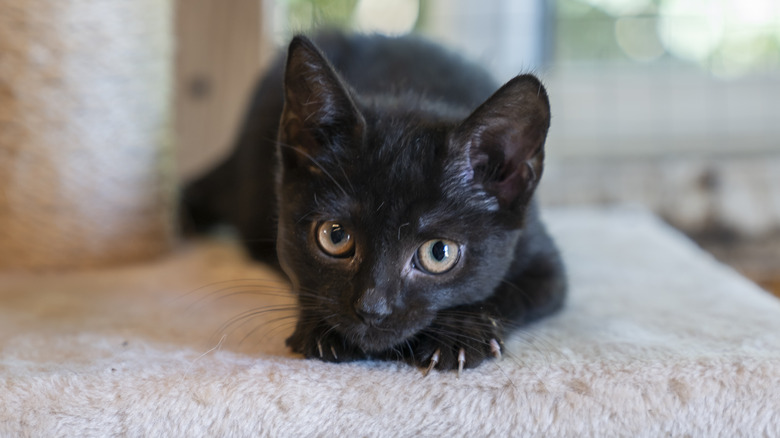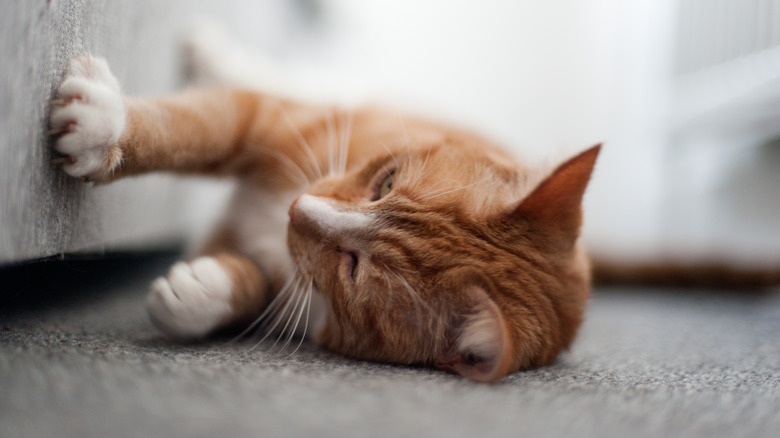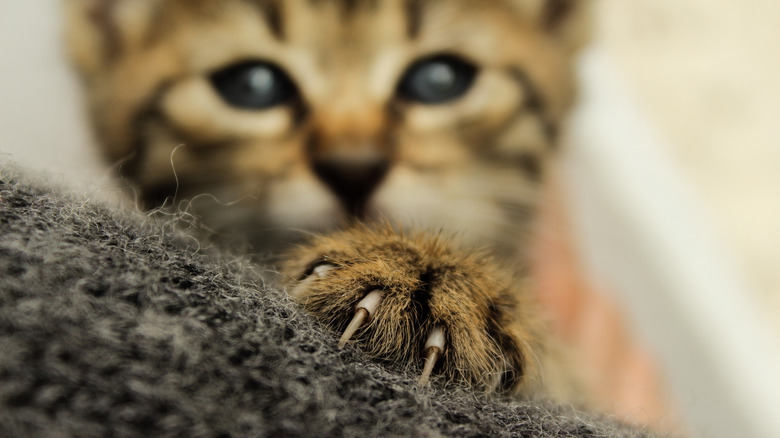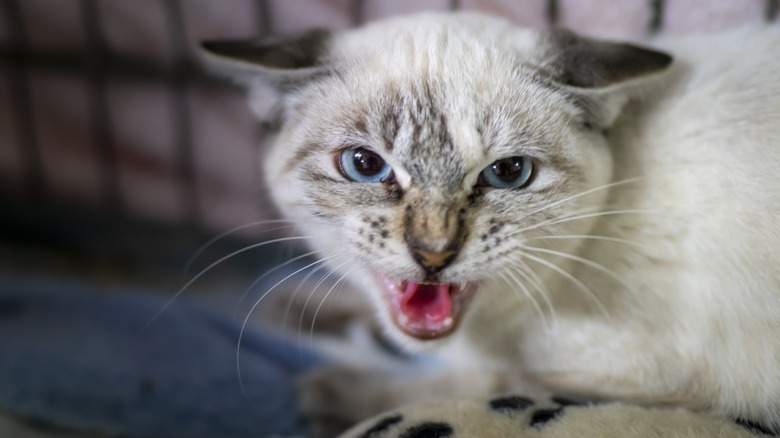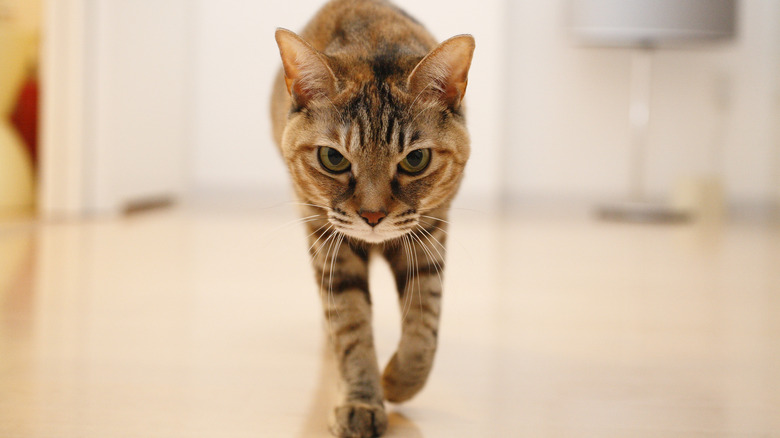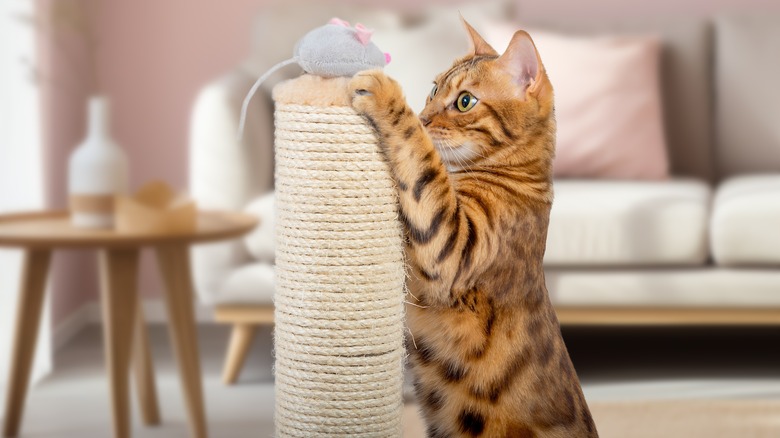5 Reasons You Should Never Declaw Your Cat
Cats have claws for a reason, and taking them away means they are losing a large part of themselves. Declawing has no medical benefit to your cat, unless it's absolutely necessary due to a condition such as cancer in the nail beds. There are many reasons why you shouldn't declaw your cat, and some U.S. states and cities have even started banning declawing.
Declawing a cat can cause pain even after they are fully recovered from the surgery. Declawing can also lead to other potential health problems as well as mobility issues. It can also change the way your cat behaves and lead them to becoming more aggressive. If you're worried about your cat scratching you and other people or clawing the couch, there are better, safer ways to prevent this from happening. Instead of declawing, try clipping your cat's nails regularly or using nail caps to help prevent scratching damage.
Regrowth and arthritis
Declawing can cause big issues if done improperly. If the procedure isn't performed correctly, there is a chance a cat's claws can regrow, leading to a lot of pain and problems. Bone spurs are one issue that can arise when a cat's claws grow back after declawing, which can lead to nerve damage and lots of pain for your kitty. It's also possible for cats to develop bone infections after being declawed, which can be severe.
Along with the potential for their claws to grow back and cause damage, declawed cats may be more prone to certain health conditions than cats who have claws. When cats are declawed, they change where they put their weight, placing it on their paw pads rather than on their toes. After a while, this behavior can lead to arthritis due to the pressure being put on the legs and spine.
Pain in the paws and back
No one wants their feline friend to be in pain, but declawing them can do just that. One of the main reasons you shouldn't declaw your cat is the potential suffering it can cause them. Even after they are recovered from the procedure, it's still possible for cats to experience pain in their paws. Continual paw discomfort after being declawed can happen for a multitude of reasons, including bone fragments being left in the paw or an infection. Cats can also suffer nerve damage that can cause lasting pain in their paws.
Cats that have been declawed can also experience pain in their backs. After the surgical procedure is performed, they face a long recovery period and have to learn how to walk in a whole different way. This change in walking behavior can lead to back pain.
Behavioral issues
Along with physical problems, declawing a cat can cause behavioral issues. One behavioral change often seen in declawed cats is aggression. Declawed cats might be more aggressive due to the fact that they are in pain. One way this aggression may manifest is biting. Declawed cats are also more likely to pull out their fur and over-groom themselves than cats with claws.
Another problem declawed cats often face is litter box issues. When their paws are in pain, they don't feel inclined to use the litter box because the gritty litter hurts when they scratch and walk in it. So, instead they may start going other places rather than where they are supposed to. This behavior can sometimes be fixed by switching to a different type of litter that's softer on the paws, but not declawing your cat is going to be the best way to ensure they keep using their litter box.
Lameness and balance problems
Lameness is another issue many declawed cats experience. When a cat's claws are removed, walking is a whole new experience for them. They have to learn how to walk with no claws on their feet, and it can be painful and awkward for them. Hence, lameness can occur and is also often responsible for back pain in declawed cats.
Along with lameness, when a cat is declawed, their balance can be affected. When cats lose the claws that they are so used to having, it can cause them to also lose their regular sense of balance, which can lead to other problems. Without their normal balance abilities, cats cannot run and jump like they normally would be able to, and they may be more likely to injure themselves trying to do these things.
Can't partake in natural behaviors
When cats are declawed, they can't partake in many of the natural, instinctual cat behaviors they normally would if they had claws. The prime example of this is scratching. While a declawed cat might still mimic the act of scratching, they aren't going to get the same effect. Cats have scent glands on their paws, and scratching is how they mark their territory. When they can't do this, cats can become stressed which can therefore lead to behavioral issues.
Along with scratching, cats also use their claws as a defense mechanism. When they don't have their claws, they aren't able to protect themselves as well if they come across danger, especially if they're an outdoor cat. Indoor cats also use their claws to do many different tasks, such as climbing and playing. Without their claws, they don't have the ability to do these things they normally would. If they are experiencing pain from the declawing procedure, this can also prevent them from practicing these behaviors.
